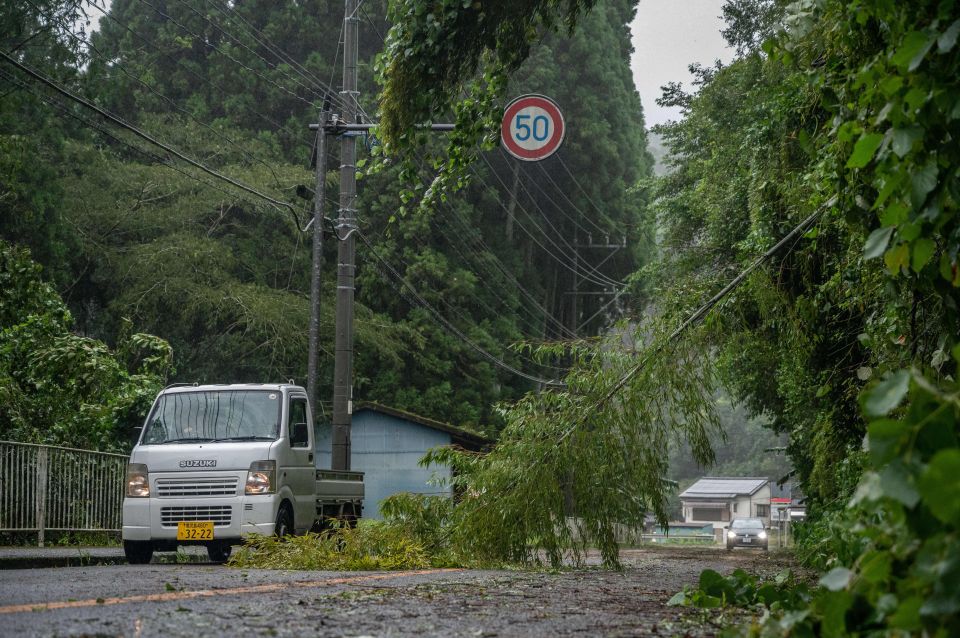Typhoon Nanmadol made landfall in southwestern Japan on Sunday night, with authorities urging millions of people to take shelter from the powerful storm’s strong winds and torrential rain.
About 294,000 households were without power on Japan’s southern main island due to Nanmadol, one of the most powerful typhoons to hit Japan.
Almost all train services in Kyushu were suspended from dawn to avoid the worst part of the storm, the 14th of the season, as it moved from south to north there, unleashing exceptionally strong wind gusts and torrential rain.
Homes without electricity include about 108,000 in Kagoshima prefecture and 82,000 or more in Miyazaki prefecture, according to Kyushu Electric Power Co.
Strong valley flow in Japan in cities affected by #typhoon #نانمادول 🇯🇵#Nanmadol #stormhour #hurricane #thunderstorm #Japan #TyphoonNanmadol #日本 #Japanese pic.twitter.com/jJYGcwI71A
— Siraj Noorani (@sirajnoorani) September 18, 2022
The storm has already forced the suspension of domestic flights to or from Kyushu for the last three days, where practically all rail transport is suspended, and has also meant that bullet train services linking the cities of Fukuoka, Hiroshima and Osaka, including those that extend services to Nagoya and Tokyo, both in the center and east of the country.
Shops in shopping complexes around Fukuoka station were closed to prevent storm damage, while few pedestrians were there Monday morning even though the rain and wind had weakened.
Since the rains caused by the typhoon began, the Miyazaki prefecture, in southern Kyushu, has already accumulated 1,000 millimeters of rainfall, an unprecedented level.
Typhoon Nanmadol brought heavy rain and destructive landslide risk to Japan’s southernmost main island, after millions were ordered to seek shelter from the storm. https://t.co/xdLyoh7a8i pic.twitter.com/lCC16GwNfc
— The New York Times (@nytimes) September 18, 2022
The slowness with which the storm is advancing, barely 15 kilometers per hour, and its large size, have been leaving abundant rainfall in most of the Japanese archipelago for days and, in addition to Miyazaki, the alert has been activated for rivers in danger of overflow in those of Oita and Kumamoto, also in Kyushu, and Yamaguchi, in the extreme west of the island of Honshu, the main island of the country.
Nanmadol forced the JMA on Saturday to activate for the first time the maximum typhoon alert for one of the four main islands of the archipelago, an alert that is maintained by winds, rainfall and waves that the JMA considers to be unprecedented in the country.
The authorities are recommending that the inhabitants of the most affected areas, especially in Kyushu, take shelter in safe places, with solid construction and away from ravines, and that they go to evacuation centers if this is not possible.
In turn, he has asked the population of the areas to which the storm is approaching to refrain from leaving their homes.
The JMA expects the typhoon to move along this Monday in a northeasterly direction over the prefectures of Yamaguchi and Tottori, in Honshu, and to cross much of the western Japanese coast during the night.

